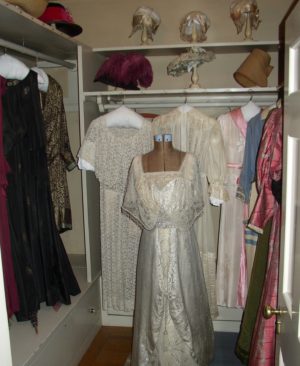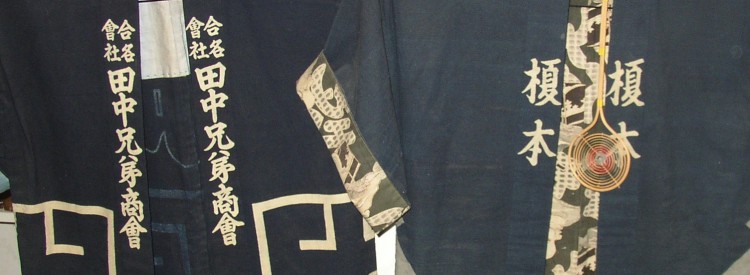 The clothing collection at Hill-Stead consists of suits and dresses that belonged to Theodate dating from the 1880s to the 1930s, as well as garments that belonged to Alfred and Ada Pope, and items that Theodate and her husband John Riddle acquired while traveling in Asia. Accessories include hats, fans and parasols, including a Quaker bonnet that belonged to Theodate’s paternal grandmother and an 1830s straw poke bonnet, perhaps also having belonged to a grandmother.
The clothing collection at Hill-Stead consists of suits and dresses that belonged to Theodate dating from the 1880s to the 1930s, as well as garments that belonged to Alfred and Ada Pope, and items that Theodate and her husband John Riddle acquired while traveling in Asia. Accessories include hats, fans and parasols, including a Quaker bonnet that belonged to Theodate’s paternal grandmother and an 1830s straw poke bonnet, perhaps also having belonged to a grandmother.
Theodate frequented British fashion designer Lady Lucy Duff Gordon, Lucile, Ltd., from whom she purchased three evening gowns, a walking dress for day wear, and at least two silk boudoir caps. Gordon began working as a dressmaker from home in 1884 in order to support herself and her daughter, opened “Maison Lucile” in the West End of London by 1894 and, by 1900, had become one of the great couture houses of London. By 1915, Lucile had branches in Paris, New York and Chicago.
Highlights from the collection include:
A Blue-and-Ivory Walking Dress by the British fashion designer Lucile (Lady Lucy Duff Gordon), ca. 1917, featuring graceful, full folds, bold button detail, a cape-like effect at the back, and an overall military touch. This day dress would have been perfect for a spring or summer morning stroll.
Theodate owned at least three Boudoir Caps, two of which are also by Lucile. These are delicate, frothy confections made of silk, netting, and embroidered and appliqued flowers. Such caps were worn in the morning before one’s hair was ‘done for the day.’
The most lavish dress in the collection is a Cocktail Gown, ca 1910, of ivory damask with elaborate pearl and crystal beading. During this era asymmetrical design was popular and the bodice reflects that trend with a single row of lace along the right side of the V-shaped bodice.
Another spectacular dress is a Silk Sheath with a heavily-beaded overlay, ca 1920s. Beading was very popular in the 1920s and this dress recalls the glamour of the Jazz Age. The garment’s construction consists of rose silk/satin under-dress topped with beaded, black-net panels attached at the shoulders and sides. The primary motif is a spider-web pattern on the bodice, and an Asian-inspired design on the lower portion of the skirt, all made of iridescent and metallic, faceted-seed beads, and tube-shaped bugel beads. The dress required stamina to wear for lengthy periods of time as it weighs approximately 5 to 7 pounds.
The collection includes a few items of men’s wear: Alfred Pope’s three-piece custom-ordered Summer Suit, 1911, in off-white with dark pinstripes is the only item to survive from the men of the household. Two Japanese Hapi Coats were undoubtedly acquired as souvenirs by Theodate and John Riddle, most likely while on a lengthy 1919 trip to Asia. These garments were worn by workers much as department store smocks or uniforms are worn today.
